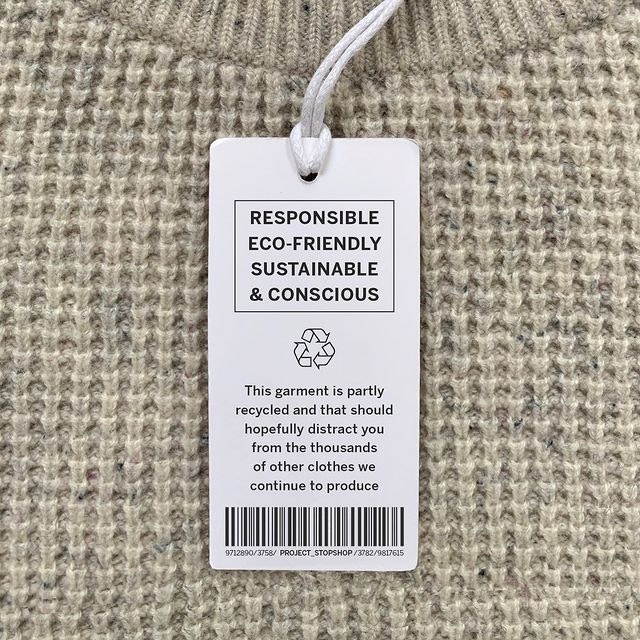Wearing Sustainable
With the fashion industry being one of the most successful and easily accessible to its consumers, it can be quite enticing to occasionally splurge on something trendy. Especially now that multiple big apparel companies have started to adapt the sustainable label on some of their items. Admittedly, most of us do wonder about the authenticity of such labels. Hence, this blog will give you a general idea of eco-labels in the fashion industry, and some pointers for sustainability whilst still being able to treat yourself to fashion trends.
The ‘eco’ label
First of all we must ask ourselves,
What exactly does the ‘eco label’ mean to you as a consumer?
As consumers, we are bombarded with an immense number of choices when it comes to fashion, from luxury brands, fast fashion to second hand or ethical labels. Over the years, the mindset of both the fashion industry and its consumers have shifted to being more mindful of their impact on the environment. In a sense the ecolabel empowers consumers to identify products that are environmentally harmful, while encouraging the commitment to environmental and social improvement. In general, an ecolabel can be defined as a tag that certifies that a product is sustainable by disclosing all of its credentials.Nevertheless, the label of ‘green’ can be deceptive and used as a mere marketing tool. Here you can find a short list of labels that you could trust in your search for finding the ultimate eco-label [1].

Fast fashion
In particular, the fast fashion industry, known for its affordability and accessibility has become one of the biggest actors that are exercising the eco-label as a classification in their collection. The labels indicate various actions performed to minimise the environmental impact such as recycling, and technologies that consume and expel less to mention a few. A detailed account of some sustainable initiatives of different brands can be found here.
But be aware, while the industry is on the road to constant improvement, they have also been a subject of constant speculation when it comes to their role in climate change, and whether they are actually making any significant strides in reducing their environmental impact. Multiple articles and studies talk about greenwashing and the lack of transparency in their claims of sustainability [2][3]. Mainly the popular Gen Z fast fashion brands such as H&M, Zara and Mango make use of greenwashing. Precisely this generation is most environmentally conscious and aims to buy clothing that suits their values. “But as some companies attempt to meet Gen Z’s demands for sustainability, others might merely be presenting a facade” [4].
Nevertheless, while studies indicate that the fast fashion industry is on the road to improvement, there are also multiple other options when it comes to fashion.

Circular fashion
A mode of implementing the sustainable mindset is through rental fashion. The circularity of rentals implies that it is lighter on the environment by reducing both production demands and easing the load off landfills. On a lighter note, rentals make luxury brands more affordable while keeping your wardrobe Marie Kondo approved. Additionally, creating seasonal capsule wardrobes is especially easy with this system.
While rental fashion promotes the idea of minimising single-owned articles, upcycling on the other hand encourages longer use out of older articles. Upcycling also gives new use to ‘deadstock’ which is the left-over material from production. This promotes less waste in landfills and less production of new material. An additional pro is that upcycled fashion are usually unique one-of-a-kind pieces that are hard to come across with the generic fast fashion articles.
Another major section of circular fashion is resale or second-hand articles. Not only is this easy on the environment but also leads to new trends such as Vintage fashion. The affordability paired with its sustainable benefits make it another hit among consumers. The circularity here encourages not just buying but also donating unused pieces.

Final thoughts
To round off, some final thoughts;
- Buy good quality staple pieces that last longer
- Shop for others through circular fashion
- Natural doesn’t always mean it’s 100% eco-friendly, so check WTF: What The Fabric
- When in doubt, look for the facts
- Don’t feel guilty with the occasional splurge as the entire industry is making an effort just like the rest of us. But FYI, here you can find some sustainable brands.
By Aishwarya Muralidharan
